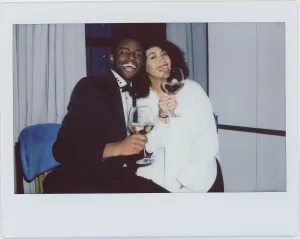Planning a wedding with guests from different cultures can be an enriching and transformative experience, offering a chance to create a celebration that truly reflects the diverse tapestry of human customs and traditions. It’s an opportunity to weave together distinct cultural threads into a harmonious tapestry that not only honors your unique backgrounds but also fosters a shared sense of community. Let’s dive deeper into some practical tips and insights to ensure your multicultural wedding is as inclusive and memorable as possible.
Embrace Cultural Diversity
Understanding and Research
To genuinely embrace cultural diversity, start with research. Spend time learning about the customs, traditions, and significant symbols of the cultures represented. This might involve reading books, consulting cultural experts, or even having conversations with family and friends who can provide firsthand insights. Consider attending cultural festivals or events to immerse yourself in the experiences firsthand. This can provide a deeper understanding and appreciation of the nuances involved.
Real-Life Example
Consider the wedding of Aisha and John, a couple from Muslim and Christian backgrounds, respectively. They chose to incorporate the Islamic tradition of a Nikah ceremony alongside a Christian blessing. This not only honored both families but also educated their guests about each other’s cultural heritage. The couple went a step further by creating a small booklet for their guests, explaining the significance of each ritual. This not only served as an educational tool but also as a memorable keepsake.
Actionable Tip
Create a cultural calendar that includes key dates, customs, and relevant information. This will serve as a handy reference throughout your planning process. Additionally, consider consulting with a cultural advisor or engaging family members to ensure authenticity and respect in the representation of each culture.
Communication is Key
Transparent Dialogue
Initiate open conversations with both families about what traditions are most important to them. This dialogue should be ongoing, allowing for adjustments as needed. Use digital tools like shared documents or apps to keep everyone informed and engaged. It’s crucial to establish a safe space where family members feel comfortable expressing their opinions and concerns.
Example of Effective Communication
During the planning of their multicultural wedding, Emily and Raj used a shared Google Calendar to coordinate events and deadlines. This simple tool helped synchronize their families’ schedules and expectations, which was crucial in avoiding misunderstandings. They also held regular Zoom meetings with their families to discuss updates and gather feedback.
Practical Tip
Host a pre-wedding family gathering or virtual meeting where all parties can express their views and expectations. This helps set a collaborative tone from the outset. Consider using breakout rooms for smaller group discussions to ensure everyone has a voice and feels heard.
Fusion of Cultures
Creative Blending
Blending cultures doesn’t mean diluting them; it means finding authentic ways to integrate elements from each. This could range from having a bilingual ceremony to serving a fusion menu that features dishes from both cultures. Think creatively about how to blend music, dance, and decor to reflect both heritages.
Cultural Fusion Inspiration
Think about how you can incorporate cultural attire into your wedding. For instance, the bride might wear a traditional Western gown for the ceremony and change into a sari for the reception, or vice versa. Additionally, consider creating a fusion dance performance that includes traditional moves from both cultures, providing a unique and entertaining experience for your guests.
Tip for Successful Fusion
Hire a caterer who specializes in multicultural cuisine or two separate caterers who can collaborate on creating a seamless dining experience that honors both cultures. Don’t forget to include a tasting session where key family members can provide input and approval.
Plan Ahead
Long-Term Planning
Start your planning process at least a year in advance, if possible. This gives you the flexibility to accommodate various cultural traditions and navigate any potential logistical challenges. Make sure to build in extra time for potential shipping delays of culturally specific items, such as attire or decor.
Experienced Assistance
Consider engaging a wedding planner who specializes in multicultural weddings. They will bring invaluable expertise and a nuanced understanding of how to blend different traditions harmoniously. Look for planners who have testimonials or case studies from previous multicultural weddings to ensure they are well-versed in managing diverse needs.
Practical Example
In planning their wedding, Marco and Mei engaged a planner who had experience with both Italian and Chinese customs. This ensured that their tea ceremony and traditional Italian reception were both thoughtfully executed. The planner organized workshops for the bridal party to learn about the customs involved, enhancing their appreciation and participation in the events.
Checklist for Planning
- Research: Dedicate time to understanding both cultures.
- Budget: Allocate funds for additional cultural elements.
- Schedule: Plan a timeline that respects cultural holidays and events.
- Communication: Maintain open and consistent discussions with family and vendors.
- Flexibility: Be prepared to adapt plans as necessary to accommodate unforeseen challenges.
Respect and Sensitivity
Cultural Sensitivity
Approach the planning process with a mindset of learning and respect. Be open to suggestions and willing to make adjustments to ensure all guests feel welcome and honored. Consider setting up a cultural sensitivity workshop for your bridal party to educate them on key cultural nuances and etiquette.
Example of Sensitivity
When planning their wedding, Carlos and Priya ensured that their invitations included explanations of the cultural significance behind each event. This not only educated their guests but also demonstrated respect for both cultures. They went further by including a glossary of terms used in ceremonies, enhancing understanding and appreciation among attendees.
Sensitivity Tip
Include a cultural guide in your wedding program that explains the significance of different rituals and customs. This can enhance your guests’ appreciation and understanding. Additionally, consider offering translations or interpreters for guests who may not be familiar with the languages used during the ceremony.
Additional Considerations
Dress Code and Attire
When planning a multicultural wedding, dress code can be a sensitive area. Be explicit about what is expected from guests. If traditional attire is encouraged, provide detailed guidelines and suggestions on where to obtain such clothing. Consider offering a rental service for traditional garments to make it easier for guests to participate.
Inclusive Entertainment
Consider entertainment that reflects both cultures. This could include hiring musicians or dancers who specialize in cultural performances or organizing a dance-off featuring traditional dances from each culture. Have an emcee or cultural ambassador explain the significance of each performance to enhance the guests’ experience.
Personalizing Vows
Encourage personalized vows that reflect the couple’s cultural backgrounds. This is an intimate way to bring cultural elements into the ceremony and make it deeply personal. Couples might choose to exchange vows in both languages, offering translations in the wedding program for guests.
Handling Potential Challenges
Navigating Cultural Differences
Some cultural traditions may seem in conflict with one another. It’s essential to approach these differences with an open mind and a willingness to compromise. For example, if certain dietary restrictions pose a challenge, work with your caterer to create a menu that satisfies everyone. Engage both families in tastings to ensure all preferences and restrictions are respected.
Conflict Resolution Example
For their wedding, Liz and Ahmed faced the challenge of differing views on alcohol consumption at the reception. Through open discussions and compromise, they decided to have a non-alcoholic cocktail hour followed by a traditional bar for those who wished to partake. This solution respected both families’ values and allowed everyone to celebrate comfortably.
Conflict Resolution Tip
Establish a “cultural ambassador” from each family who can help mediate discussions and provide insight into potential areas of compromise. This person can act as a liaison, ensuring that all voices are heard and respected during planning.
Building a Multicultural Experience
Crafting Invitations
Design wedding invitations that reflect the multicultural theme. Use symbols, colors, and motifs from both cultures to create a cohesive yet diverse aesthetic. Consider including a small guide or note explaining the meaning behind these design choices.
Creating a Cultural Experience
Instead of just a wedding, think of the event as a cultural showcase. Organize pre-wedding events that allow guests to engage with the cultures involved, such as cooking classes, traditional craft workshops, or storytelling sessions. This not only enriches the experience but also deepens the guests’ connection to the cultural elements of the wedding.
Utilizing Technology
Use technology to enhance the multicultural experience. For instance, create a wedding website with sections dedicated to explaining cultural traditions, sharing stories about how both cultures came together in your relationship, and providing practical information for guests. Consider a digital RSVP system that allows guests to express their preferences or dietary needs, ensuring a personalized experience.
Final Thoughts
A multicultural wedding is a celebration of love that transcends borders and boundaries. By embracing diversity, practicing open communication, and planning with respect and sensitivity, you can create a joyous occasion that reflects the richness of your combined cultural heritage. Remember, this is a unique opportunity to not only celebrate your union but also to educate and bring together your loved ones in a shared cultural journey. Approach the process with an open heart, and you’ll create memories that resonate with you and your guests for a lifetime.



